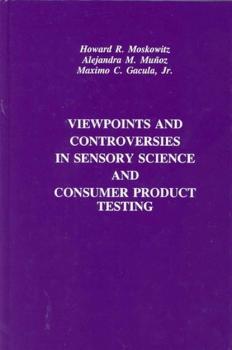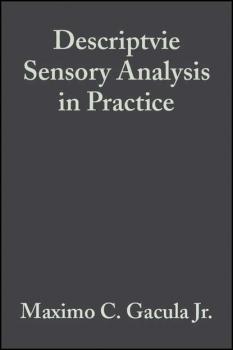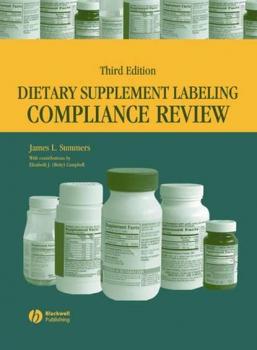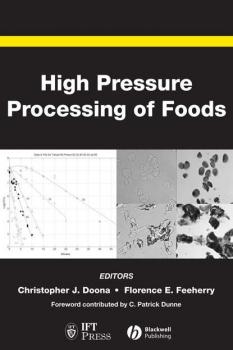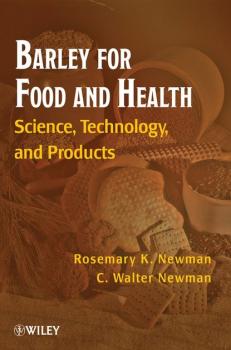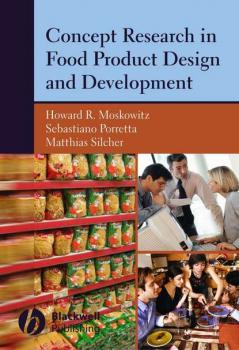ТОП просматриваемых книг сайта:
Техническая литература
Различные книги в жанре Техническая литература, доступные для чтения и скачиванияАннотация
Since the publication of the first edition in 1999, the science of probiotics and prebiotics has matured greatly and garnered more interest. The first handbook on the market, Handbook of Probiotics and Prebiotics: Second Edition updates the data in its predecessor, and it also includes material topics not previously discussed in the first edition, including methods protocols, cell line and animal models, and coverage of prebiotics. The editors supplement their expertise by bringing in international experts to contribute chapters. This second edition brings together the information needed for the successful development of a pro- or prebiotic product from laboratory to market.
Аннотация
The expert contributors to Nondestructive Testing of Food Quality clearly explain present industry advances and how to turn available instrumentation into valuable assets. Readers learn how the competencies of product knowledge, process understanding, instrumentation, principles of sensing, process control, and analytical methodology are required to turn an application into success. The broad-based coverage of topics addresses the most dominant sensor technologies keeping in mind the research initiatives advancing these technologies not only in food but also in the pharmaceutical sectors. Coverage includes: ultrasound, near infrared spectroscopy, mid-infrared spectroscopy, Raman spectroscopy, hyperspectral imaging systems, magnetic resonance imaging, electronic nose, z-nose, biosensors, microwave absorption, and nanoparticles and colloids as sensors.
Аннотация
The authors skillfully present different approaches to the same problem and even different ways to look at the same type of data. If you have ever been stumped by a controversy in product assessment, the design of studies, or the analysis of data, you will find the answer in this book.
Аннотация
This book is an outgrowth of research done by Dr. Gamt Dijsterhuis for his doctoral thesis at the University of Leiden. However, there are also contributions by several other authors, as well, including Eeke van der Burg, John Gower, Pieter Punter, Els van den Broek, and Margo Flipsen. This book discusses the use of Multivariate Data Analysis to solve problems in sensory and consumer research. More specifically the focus is on the analysis of the reactions to certain characteristics of food products, which are in the form of scores given to attributes perceived in the food stimuli; the analyses are multivariate; and the senses are mainly the senses of smell and taste. The four main themes covered in the book are: (1) Individual Differences, (2) Measurement Levels; (3) Sensory-Instrumental Relations, and (4) Time-Intensity Data Analysis. The statistical methods discussed include Principle Components Analysis, Generalized Procrustes Analysis, Multidimensional Scaling, Redundancy Analysis, and Canonical Analysis. This book will be a value to all professionals and students working in the sensory studies
Аннотация
In defining sensory properties of products, descriptive techniques that utilize trained panels are used. Arthur D. Little, Inc. pioneered a desriptive technique in the 1950's known as the «Flavor Profile» that laid the foundation for the development of current desriptive techniques used today in academia and industry. Several collections of published papers are reprinted in this book. The main areas covered include dairy products, meats, alcoholic beverages, textile materials and general applications. In addition, Dr. Gacula has prepared 40 pages of new text material on (1) Descriptive Sensory Analysis Methods, and (2) Computer Software. Methods for statistical systems (SAS) computer programs are provided
Аннотация
This book discusses experimental designs which are very useful in sensory and consumer testing. As an added feature this coverage is fully illustrated with real-life examples. In addition, the importance of fractional factorial designs are explained more fully than in books now available. The heart of this book is product optimization which covers in great detail designs and analysis of optimization studies with consumers. A rundown of this chapter includes: preliminaries, test for adequacy of statistical model and least squares estimation of regression parameters; why use optimization technique; types of optimization experiments; Plackett and Burman design; Box and Behnken design, mixture designs; search for optimum areas in response surfaces; use of contour maps in product reformulation augmentation of fractional factorial design; optimization with discrete variables, dangers of fractional factorial designs, and optimization for robustness. This book will be valuable for a wide audience of professionals in the areas of sensory, marketing, advertising, statistics, quality assurance, food, beverage, personal care, pharmaceutical, household products, and cosmetic industries. The book could also serve as a text in applied statistics
Аннотация
Consultant and long-time FDA food and dietary supplement labeling expert James Summers offers a comprehensive guide to understanding and complying with the dietary supplement labeling requirements of the Food and Drug Administration (FDA) in Dietary Supplement Labeling Compliance Review, Third Edition. Available in book or searchable CD-ROM (view CD-ROM version) formats, this updated review is composed of three essential parts: Sections I through V consist of the introduction and how-to information. Sections VI through IX consist of the compliance step-by-step review procedure (in the form of questions and responses,) and other labeling requirements. Sections X through XV consist of guidance and information for decision making. Clearly illustrated with dozens of charts, sample label panels, and supplement facts boxes, this manual is the straightforward, no-nonsense tool both inexperienced and experienced dietary supplement label reviewers need to assure labeling compliance
Аннотация
In High Pressure Processing of Foods, an array of international experts interrelate leading scientific advancements that use molecular biology techniques to explore the biochemical mechanisms of spore germination and inactivation by high pressure; investigate the inactivation of different spore species as functions of processing parameters such as pressure, temperature, time, food matrix, and the presence of anti-microbials; propose predictive mathematical models for predicting spore inactivation in foods treated with HPP; address commercial aspects of high pressure processing that include the high pressure equipment and packaging used to achieve the sterilization of bacterial spores in foods; and provide an assessment of the quality of food products preserved by HPP. High Pressure Processing of Foods is the landmark resource on the mechanisms and predictive modeling of bacterial spore inactivation by HPP.
Аннотация
With coverage of chemistry, genetics, and molecular breeding, this book provides comprehensive and current information on barley types, composition, characteristics, processing techniques, and products. Its emphasis on the nutritional and health benefits of barley is especially timely with the FDA s 2005 confirmation of barley s cholesterol-lowering properties. This resource discusses barley s role in breads and related products, and reviews its health benefits, biotechnology, and breeding applications. This is the definitive resource for cereal chemists, food scientists, nutritionists, grain and food processors, and students in appropriate courses.
Аннотация
Concepts are critical for the development and marketing of products and services. They constitute the blueprint for these products and services, albeit at the level of consumers rather than at the technical level. A good product concept can help make the product a success by guiding developers and advertising in the right direction. Yet, there is a dearth of both practical and scientific information about how to create and evaluate concepts. There has been little or no focus on establishing knowledge bases for concepts. Concept development is too often relegated to the so-called “fuzzy front end.” Concept Research in Food Product Design and Development remedies this inattention to product concepts by providing a unique treatment of concepts for the business professional as well as for research scientists. The book begins with simple principles of concepts, moves forward to methods for testing concepts, and then on to more substantive areas such as establishing validity, testing internationally and with children, creating databases, and selling in new methods for concept testing. The book combines a “how to” business book with a detailed treatment of the different facets of concept research. As such, the book represents a unique contribution to business applications in food, and consumer research methods. The book is positioned specifically for foods, to maintain a focus on a coherent set of topics. Concept Research in Food Product Design and Development appeals to a wide variety of audiences: R&D, marketing, sensory analysts, and universities alike. Corporate R&D professionals will learn how to create strong concepts. Marketers will recognize how concepts are at the heart of their business. Sensory analysts will find the book a natural extension of their interest in product features. University students will understand how concept research is a critical part of the “consumer-connection.” Concept Research in Food Product Design and Development is the definitive, innovative text in describing how to create, analyze, and capitalize upon new product concepts.



